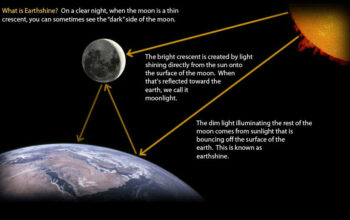The elusive nature of dark matter has long perplexed astrophysicists and cosmologists alike. Hypothetically constituting approximately 27% of the universe’s mass-energy content, dark matter remains invisible and undetectable through conventional observational techniques. The quest to elucidate its properties and ascertain its existence has generated a plethora of theories and experiments, but the recent lack of definitive results fosters an escalating atmosphere of controversy and skepticism within the scientific community.
The concept of dark matter emerged from discrepancies observed in galactic rotation curves. In the 1970s, astronomer Vera Rubin noted that stars on the outer regions of galaxies were orbiting at unexpectedly high velocities, suggesting the presence of a substantial, unseen mass exerting gravitational influence. This unsettling revelation compelled theorists to propose a non-luminous form of matter, fundamentally changing our understanding of the universe. The need for dark matter was further cemented by observations of gravitational lensing, cosmic microwave background radiation, and large-scale structure formation, all of which hinted at a reality that diverged from the predictions of visible matter alone.
Nonetheless, aspirations to reveal the specifics of dark matter have been met with a pronounced dearth of empirical evidence across various experimental frameworks. From direct detection experiments, such as those conducted deep underground to mitigate cosmic interference, to high-energy particle collisions in collider facilities, attempts to produce or detect dark matter candidates—ranging from Weakly Interacting Massive Particles (WIMPs) to axions—have largely yielded null results. Each failure to produce conclusive outcomes not only leaves physicists in a conundrum but also incites heated debates regarding the theoretical underpinnings that support the dark matter hypothesis.
This situation of uncertainty has led to vibrant discussions surrounding alternative theories. Some physicists advocate for Modified Newtonian Dynamics (MOND), which posits alterations to Newton’s laws at galactic scales to account for the observed phenomena without invoking additional unseen mass. Others have suggested that modified gravity theories might reconcile the need for dark matter with observable phenomena. Yet, these alternative paradigms are fraught with their own intricacies and challenges, leading to a polarization of opinions within the scientific discourse.
In response to the emergent controversy born from the lack of dark matter detection, there is a burgeoning sense of reconsideration within astrophysics. This initiative seeks to reevaluate the environments and frameworks through which data has been interpreted. In light of recent failed experiments, some scholars are positing that established cosmological frameworks may require rigorous reevaluation, which could lead to profound intellectual shifts. The implication that current models might not adequately represent the complexity of the universe is a radical notion; however, it speaks to the integrity of scientific inquiry—where hypotheses are continuously scrutinized and refined in the face of new evidence or lack thereof.
The discernible absence of dark matter has not only invoked skepticism regarding its existence but has also kindled a fervent curiosity around cosmic structures vis-à-vis their formation and evolution. If dark matter exists as hypothesized, why has its most avid pursuit yielded little in way of tangible evidence? This contemplation raises essential inquiries into the limitations of current methodologies and the very fabric of scientific exploration. Perhaps the answer lies in the diverging methodologies employed across theoretical and experimental frameworks, beckoning collaboration and interdisciplinary approaches to unveil cosmic truths.
The dissonance between theory and observation has evoked reflections on the nature and trajectory of scientific progress. In eras past, revolutions in understanding have often transpired following significant challenges to entrenched beliefs. The trial of dark matter embodies such an epoch, wherein the ramifications of non-detection may catalyze transformative paradigms encompassing broader cosmological interpretations. As attention turns toward exploring modified frameworks, novel avenues for research emerge alongside the provision for expansive dialogue among physicists advocating for differing perspectives.
This crucible of inquiry shines a light on the scientific community’s collective resilience amid adversity. Open discourse fosters an inviting atmosphere for innovative ideas, enriching the investigative processes underlying cosmology. Embracing a multidisciplinary approach amalgamates insights from physics, astronomy, and mathematics—each domain providing its unique lens through which to analyze the universe’s mysteries.
Furthermore, the intricacies surrounding dark matter precipitate broader discussions regarding the scientific method, emphasizing its iterative nature. This discourse serves as a poignant reminder that doubt and controversy are not adversaries to progress but rather catalysts that propel us toward greater understanding. As scientists engage with the enigmas posed by dark matter, they simultaneously confront fundamental questions about the universe’s architecture, challenging their cognitive frameworks and paving the way for future discoveries.
From this standpoint, the notion of a dark matter “result” transforms into a broader inquiry into the nature of existence itself. Are we, as a community, prepared to abandon long-held beliefs in search of knowledge, irrespective of the outcomes? The consensus among scholars may slowly coalesce around the understanding that the universe is a tapestry woven from both certainties and uncertainties, each thread contributing to the intricate narrative of cosmic phenomena.
In conclusion, the absence of concrete evidence supporting dark matter candidates should not induce despair but rather stimulate curiosity and intellectual exploration. As this scientific journey unfolds, the controversies it engenders are unlikely to yield to facile resolutions. Instead, they invite us to ponder deeper questions about fundamental forces, cosmic structures, and the very nature of reality itself. Through collaborative endeavors and open-mindedness, the scientific community stands on the precipice of transformative insights into the enigmatic universe that surrounds us.








